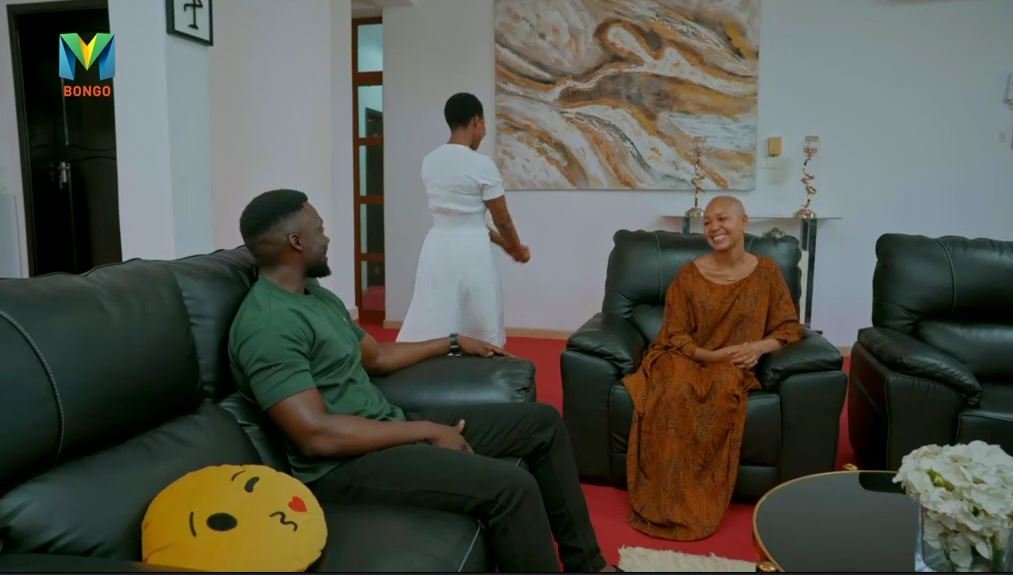The Compact Contender: Why the Vivo X200 Pro Mini is Underrated Yet a Flagship Bargain in DisguiseIn the sprawling smartphone spectacle of September 2025, where behemoths like the Samsung Galaxy S25 Ultra and iPhone 17 Pro Max dominate with their cavernous screens and AI-fueled extravagance, the Vivo X200 Pro Mini stands as a defiant pocket rocket. Launched on October 25, 2024, as part of Vivo’s acclaimed X200 series, this 6.31-inch powerhouse squeezes flagship DNA into a form factor that’s refreshingly svelte—187g and just 8.2mm thick. Yet, it’s frequently dismissed as a “compromised curiosity” in global reviews, overshadowed by its larger X200 Pro sibling and the endless quest for bigger batteries and bolder zooms. Priced at around CNY 5,299 (~$750 USD) at launch, the Mini has been critiqued for “stripped-down” features like a smaller telephoto sensor and no satellite connectivity, per NotebookCheck’s February 2025 analysis. But for Kenyan users—urban commuters dodging Nairobi traffic or photographers chasing golden-hour shots in Maasai Mara—this underrated gem isn’t just good; it’s a masterclass in efficient excellence. Delivering pro-level photography, blistering performance, and all-day stamina in a one-handed wonder, the X200 Pro Mini offers unmatched value, proving that less can indeed be more.Overlooked in the Oversized Era: The Mini’s Quiet RebellionVivo’s X200 series arrived with a bang in late 2024, touting ZEISS optics and the Dimensity 9400 chipset, but the Pro Mini quickly faded into the footnotes. Reddit’s r/Vivo community debates its merits endlessly—”Should I buy the X200 Pro Mini?” one thread asks, with users lamenting its “weaker zoom” compared to the Pro’s 200MP periscope—while GSMArena’s hands-on notes its “flatter, more handleable” design as a subtle evolution ignored amid curved-screen hype. Digital Trends calls it “the small phone of my dreams,” yet laments its China-centric launch, limiting global buzz to enthusiasts who import via AliExpress or TradingShenzhen. By mid-2025, as the S25 and Pixel 10 flood markets, the Mini’s absence from carrier shelves seals its underrated fate: no flashy U.S. ads, no TikTok unboxings, just whispers from photographers praising its Sony LYT-818 main sensor.This obscurity stems from Vivo’s niche appeal—strong in Asia, but battling brand bias in Africa, where Samsung reigns supreme. Critics fixate on omissions like USB 2.0 (vs. 3.2 on the Pro) or a halved telephoto sensor size, calling it “throttled” under load, per NanoReview benchmarks. Yet, this misses the Mini’s ethos: a deliberate distillation of flagship tech for real-world wielders. In Kenya, where 70% of users prefer devices under 6.5 inches (CAK 2024 survey), its flat-sided ergonomics and IP69 rating (surpassing the iPhone 16 Pro’s IP68) make it a practical powerhouse, not a poseur. As one r/Vivo poster raves, “It’s a beast… buttery smooth on OriginOS,” highlighting how its compactness amplifies usability over ostentation.Flagship Feats in a Petite Package: Why It’s a Genuinely Great PhoneThe Vivo X200 Pro Mini defies “mini” stereotypes with unyielding prowess. Its 6.31-inch LTPO AMOLED display (2640×1216, 120Hz adaptive, 4500 nits peak) delivers immersive visuals with HDR10+ and P3 gamut—vibrant for Netflix queues or precise for photo edits—while Schott Armor Glass shrugs off drops. Powering the show is MediaTek’s Dimensity 9400 (3nm, octa-core up to 3.63GHz), scoring over 1.8 million on AnTuTu with a Mali-G720 Immortalis-MC12 GPU; paired with 12/16GB LPDDR5X RAM and up to 1TB UFS 4.0 storage, it multitasks like a champ—seamless 4K video in CapCut or lag-free Genshin Impact at 60FPS.Cameras steal the spotlight: a ZEISS-tuned triple array with 50MP main (Sony LYT-818, f/1.57, 1/1.28-inch, OIS), 50MP ultrawide (f/2.0, autofocus), and 50MP periscope telephoto (3x optical, f/2.6, up to 100x digital). NotebookCheck dubs it “the best compact smartphone for photography,” praising the main sensor’s low-light prowess and natural bokeh—rivaling the iPhone 16 Pro despite the Mini’s slimmer profile. Videos hit 8K@30fps with gyro-EIS, and the 32MP front cam (f/2.0) nails selfies and 4K calls. The 5700mAh silicon-carbon battery endures 12-14 hours of mixed use, with 90W FlashCharge (full in 30 minutes) and reverse wireless for earbuds. Funtouch OS 15 (Android 15) is fluid and bloat-light, with AI perks like real-time translation and photo enhancement—plus four years of updates.Sure, no wireless charging or eSIM (global variant adds it), and the telephoto lags at extreme zooms, but for KSh 95,000-110,000, it’s overdelivers: a phone that fits jeans pockets yet punches like a heavyweight.Mini Price, Maximum Value: A Smart Spend in Shilling TermsThe X200 Pro Mini’s CNY 5,299 launch (~KSh 97,000 at September 2025’s 129 KES/USD rate) undercut the X200 Pro’s CNY 6,299, but imports and duties have stabilized it at KSh 95,000-110,000 for the 16GB/512GB model—far below the iPhone 16 Pro Mini’s rumored KSh 140,000+ or Galaxy S25’s KSh 120,000. This positions it as a value virtuoso: flagship silicon at mid-premium math, with resale holding 75% after a year (per Jiji trends). Unlike Samsung’s seven-year promise, Vivo’s four OS upgrades suffice for most, and the IP69 build ensures longevity—slashing repair costs in Kenya’s dusty climes.For shutterbugs or execs, the ZEISS system saves on DSLRs (KSh 50,000+), while the Dimensity’s efficiency yields 20% better battery than rivals. In a M-Pesa-driven economy, NFC and 5G (sub-6GHz/mmWave) enable seamless transactions on Safaricom networks. As Amateur Photographer notes of the series, it’s “high-end optics at affordable prices”—value that appreciates with every crisp shot or all-nighter unplugged.Securing Your Mini Marvel in Kenya: Stock and SpotsAs a global import (Funtouch OS edition ships to Kenya via Vivo’s site), the X200 Pro Mini thrives on e-commerce—prioritize verified sellers for warranty (one year global). Duties add 10-15%, but EMI softens it. September 2025 stock is solid on Jumia, with Jiji for deals. Here’s the essentials:Store/Platform
Price Range (KES)
Notes
Jumia Kenya (jumia.co.ke)
95,000 – 105,000
Search “Vivo X200 Pro Mini”; official Vivo listings with buyer protection, free Nairobi delivery, and bundles (case + charger). Flash sales hit 10% off—global variant in Titanium Green or Black.
Jiji Kenya (jiji.co.ke)
92,000 – 102,000
P2P imports from Dubai/China; Nairobi/Mombasa pickups for haggling. Verify IMEI—often includes 90W adapters, but check for Funtouch OS.
Phone Place Kenya (phoneplacekenya.com)
98,000 – 108,000
Flagship specialist; Westlands store with same-day setup. Stocks 16/512GB—cash/EMI, plus ZEISS lens cleaners.
Avechi Kenya (avechi.co.ke)
96,000 – 106,000
Online hub with nationwide shipping; pairs with accessories. 7-day returns—ideal for Pink or White exclusives.
Vivo Official (vivo.com/ke)
100,000+ (incl. duties)
Direct imports; contact 0800000041 for stock. Full warranty, but add KSh 10,000 for shipping—best for authenticity.
Pro tip: Jumia’s Pay on Delivery eases risks; local Vivo centers in Nairobi handle tweaks.Pocket-Sized Perfection: The Mini That Maximizes Every MomentThe Vivo X200 Pro Mini is underrated because it bucks the bloat—eschewing satellite bells for a symphony of smarts in a sub-6.5-inch shell, lost amid the mega-phone mania. Yet, as a Dimensity-driven dynamo with ZEISS wizardry and stamina for days, it’s a good phone that reimagines “good” as genius. At KSh 92,000-110,000 in Kenya, value isn’t a footnote; it’s the headline, outshining pricier peers in portability and punch. In September 2025’s sprawl, why lug excess when you can love the little luxuries? The X200 Pro Mini isn’t just compact—it’s your compact conquest.
MRS. GARCÍA AND HER DAUGHTERS WEDNESDAY 1ST OCTOBER 2025 FULL EPISODE PART 1 AND PART 2 COMBINED







You must be logged in to post a comment.